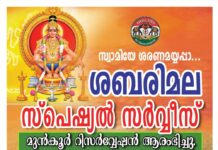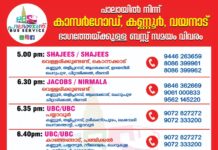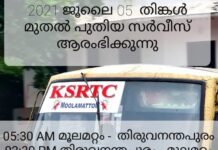Travelling by public transport vehicles in India is not a pleasant experience, and for good reason. A majority of the buses run by its state road transport undertakings (SRTUs) is old, and there is a shortage of funds to replace or refurbish them.
According to a government report, most SRTUs are unprofitable. The combined net loss of 47 SRTUs in 2015-16 was Rs 11,349 crore, 7.2% higher than in 2014-15. Topping the list was the Delhi Transport Corporation (DTC), with a loss of Rs 3,411 crore. It was followed by the Brihanmumbai Electric Supply and Transport (BEST) at Rs 1,061 crore, and the Kerala State Road Transport Corporation (KSRTC) at Rs 738 crore.
There are 54 SRTUs in India, of which 47 reported their physical and financial performance parameters to the Union road transport and highways ministry’s transport research wing, which prepared the report. The 47 SRTUs had 1.42 lakh buses in 2015-16, with the Maharashtra entity accounting for the largest fleet of buses (18,514).
Only seven such undertakings – including the Bangalore Metropolitan Transport Corporation, Karnataka SRTC, Odisha SRTC, Uttar Pradesh SRTC and Himachal Road Transport Corporation – are profitable.
Poor vehicle productivity (in terms of the distance covered per bus per day) on account of old fleets, low fuel efficiency, high staff-to-bus ratio, fare concessions, and high operation and maintenance costs were cited as some of the main reasons for the poor financial performance of SRTUs .
Some urban transport experts blame the central government’s blinkered vision for the state of SRTUs. “You can’t keep blaming the states, especially when little is being done to enhance the capacity of SRTUs. Though states do not have the money to invest, the Centre can definitely help through incentives. The Centre is promoting Metro rail projects when laying tracks in a city like Bengaluru costs anywhere between Rs 500-600 crore per kilometre. Imagine the turnaround if an amount this big is invested in a bus transport system. It’s not a question of finance but vision,” said professor Geetam Tiwari, department of civil engineering, IIT Delhi.
Tiwari said Metro networks can only complement bus-based public transport systems. “An efficient bus system will not only reduce congestion but also curb pollution levels,” she added.
Road ministry data suggests that a car consumes nearly 1.6 times more energy on an average than a bus. The figures are worse for two-wheelers, which require about 2.5 times the same amount of energy, and three-wheelers, which consume 4.7 times more. However, inadequate funds and poor maintenance have led to a steady decline in public bus fleets across the country. Average vehicle productivity stood at 305.59 km per day in 2015-16, down from 308.60 km in 2014-15.
Many SRTUs continue to run old vehicles. For instance, almost the entire fleet of Bihar SRTC is old, with an average age of 12.85 years through 2015-16. The Tamil Nadu State Express Transport Corporation Limited accounts for the second-highest proportion of old buses (78%), followed by the Chennai Metro Transport Corporation (72.7%) and the Chandigarh Transport Undertaking (72.4%).
The Association of State Road Transport Undertakings recommends that a bus be run for eight years, or until it completes 5 lakh kilometres, whichever comes earlier. In 2015-16, none of the SRTUs that reported an average vehicular age of over eight years figured among the country’s profit-making entities.
Many public bus fleets across the country also suffer from low-fuel efficiency. Among them is the DTC, which ironically runs its buses on eco-friendly CNG.
According to the report, many SRTUs have poor occupancy ratio. BEST topped the list at 47.98%, followed by Kadamba Transport Corporation Limited at 55.57% and the Calcutta STC at 57.18%. The operational efficiency and service quality of private bus operators – which constitute 85-90% of the intercity buses in the country – are far higher when compared to SRTUs, it added.
However, Tiwari said private operators register profits at the cost of other factors. “They compromise on safety, violate speed regulations and cut labour to make more money.”









